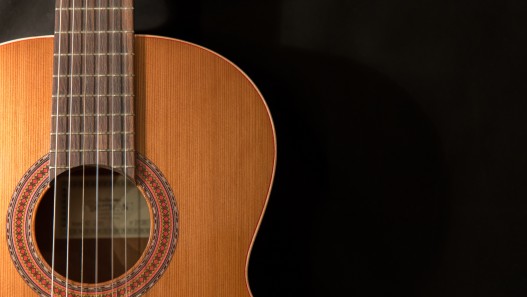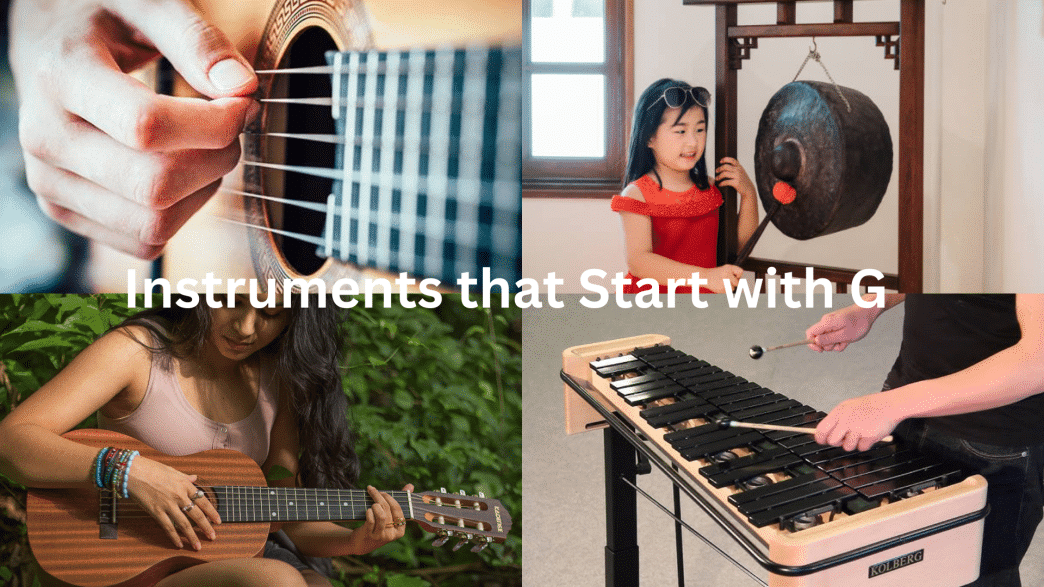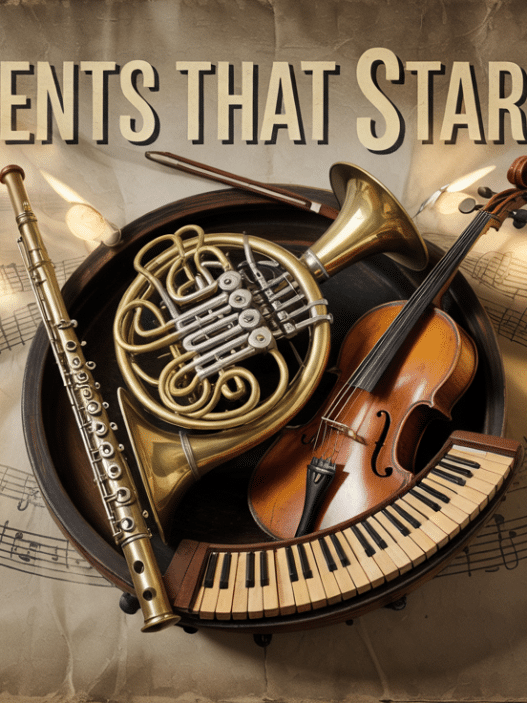Ever been to a concert where a strange-looking instrument caught your eye, but you had no idea what it was called? If it started with the letter G, you’re in the right place.
The world of music is filled with instruments from different cultures and time periods, each with its own unique sound. From the familiar guitar to the lesser-known gamelan, G-named instruments add rich textures to music worldwide.
This guide walks through instruments that start with G, from mainstream to unusual. You’ll learn about their origins, how they’re played, and what makes their sound special.
For music students, curious listeners, and beginners, these G instruments may inspire your next musical experience. Ready to meet some new musical friends? Let’s get groovin’ with G.
Why Each “G” Instrument Brings a Distinct Sound to the Table?
The world of “G” instruments offers a remarkable range of sounds stemming from their unique construction and playing techniques.
Guitar strings vibrate differently depending on how they’re plucked or strummed, creating everything from delicate classical passages to heavy metal riffs. Meanwhile, the gong’s distinctive resonance comes from its hammered metal disc that vibrates in complex patterns when struck.
In contrast, wind instruments like the gaida (Balkan bagpipe) produce sound through vibrating air columns, giving them that characteristic haunting tone.
Even within similar instrument families, variations in materials, size, and cultural origins shape each instrument’s voice, making the “G” category an interesting study in acoustic diversity.
Popular Instruments Starting with G
Musical instruments beginning with “G” come from various global traditions. Their sounds span from the deep resonances of gongs to the melodic strings of guitars.
1. Guitar
The guitar is a six-stringed instrument with a flat wooden body, a neck with frets, and tuning pegs. It is played by plucking or strumming the strings with fingers or a pick.
- Origin: Spain
- Type: String
- Genre: Rock, jazz, pop, classical
- Interesting Fact: The guitar is one of the most popular instruments globally, adaptable across genres and cultures, and is used for solo performance, rhythm, and lead roles alike.
2. Gong
The gong is a large circular metal disc, usually made of bronze or brass, suspended on a frame. It is played by striking the center or edge with a padded mallet to create a resonant, deep sound.
- Origin: East and Southeast Asia
- Type: Percussion
- Genre: Classical, ceremonial, ambient
- Interesting Fact: Traditionally used in rituals and spiritual ceremonies, the gong is also used in orchestras and meditation practices for its powerful, reverberating tone.
3. Glockenspiel
The glockenspiel consists of tuned metal bars arranged chromatically and mounted in a frame or keyboard layout. It is played with hard mallets that produce bright, bell-like tones.
- Origin: Germany
- Type: Percussion (idiophone)
- Genre: Classical, marching band, holiday music
- Interesting Fact: Its twinkling sound is often associated with magical or childlike themes in orchestras and is frequently used in festive and fantasy-themed compositions.
4. Guitalele
The guitalele is a small, guitar-ukulele hybrid with six nylon strings and a compact wooden body. It is played like a guitar but has a higher pitch and is ideal for travel and children.
- Origin: Hawaii/Japan
- Type: String
- Genre: Acoustic, folk, pop
- Interesting Fact: With its portability and playful tone, the guitalele is increasingly favored by songwriters and beginners who want a guitar feel with ukulele charm.
5. Gambang
The gambang is a wooden xylophone-like instrument with rectangular bars mounted over a resonating frame. It is played with mallets and produces warm, hollow tones typical of gamelan ensembles.
- Origin: Indonesia
- Type: Percussion (idiophone)
- Genre: Gamelan, traditional Indonesian
- Interesting Fact: As a key melodic instrument in Javanese and Balinese gamelan music, the gambang adds a soft, flowing texture that balances more metallic instruments in the ensemble.
6. Gaita
The gaita is a type of bagpipe with a leather airbag, wooden pipes, and a blowpipe, played by blowing into the bag while squeezing it to control airflow. It produces a continuous, droning melody.
- Origin: Spain (Galicia), Portugal
- Type: Wind (bagpipe)
- Genre: Folk, traditional, Celtic
- Interesting Fact: The gaita is central to Galician identity and is often played in festivals, combining haunting drones with lively tunes that echo ancient cultural roots.
7. Gaida
The gaida is a Balkan bagpipe with a goatskin airbag and two wooden pipes, used for both melody and drone. It’s played by inflating the bag and applying pressure with the arm while fingering melodies.
- Origin: Balkans (Bulgaria, Macedonia)
- Type: Wind (bagpipe)
- Genre: Folk, traditional dance
- Interesting Fact: Known for its reedy, high-pitched sound, the gaida is a key element in Balkan dance music and varies in tuning and ornamentation by region.
8. Guitarrón
The guitarrón is a large, deep-bodied six-string bass guitar with a rounded back made of thick wood. It is plucked with the fingers to produce booming, rhythmic bass lines in ensemble settings.
- Origin: Mexico
- Type: String
- Genre: Mariachi, ranchera
- Interesting Fact: The guitarrón serves as the backbone of mariachi bands, replacing the need for drums by delivering deep, resonant bass tones that carry outdoor performances.
9. Glass Harmonica
The glass harmonica consists of a series of tuned glass bowls mounted on a spinning rod, played by touching the rims with dampened fingers. It produces ethereal, sustained tones resembling a singing voice.
- Origin: Europe (popularized by Benjamin Franklin)
- Type: Percussion (friction idiophone)
- Genre: Classical, experimental
- Interesting Fact: Once believed to cause madness due to its eerie sound, the glass harmonica was favored by Mozart and Beethoven and is still used for mystical effects in music.
10. Guitar Bass
The bass guitar is a four- or five-stringed instrument with a long neck and solid body, similar in shape to a guitar. It’s played by plucking or slapping the strings to produce low-pitched rhythm lines.
- Origin: USA
- Type: String
- Genre: Rock, funk, jazz, pop
- Interesting Fact: The bass guitar provides the harmonic foundation and groove in modern bands, and its punchy tone is crucial for driving rhythm sections across musical genres.
11. Guembri
The guembri is a three-stringed bass lute made of wood and camel skin, with a rectangular body and a long fretless neck. It is plucked with the fingers and used in spiritual trance music.
- Origin: North Africa (Morocco)
- Type: String
- Genre: Gnawa, traditional
- Interesting Fact: The guembri is central to Gnawa rituals, believed to channel healing energies and connect musicians to ancestral spirits through rhythmic repetition.
12. Geomungo
The geomungo is a traditional Korean zither with six silk strings stretched over a long, fretted wooden body. It is played using a bamboo stick (suldae) to pluck the strings while the other hand presses for pitch variation.
- Origin: Korea
- Type: String (zither)
- Genre: Court music, Confucian ritual, traditional Korean music
- Interesting Fact: Known for its deep, mellow tone, the geomungo was once considered the instrument of scholars and philosophers, symbolizing wisdom and dignity in Korean classical arts.
Less Popular Instruments Starting with G
Beyond the commonly recognized “G” instruments, there are many musical treasures that merit acknowledgment. These rare instruments showcase diverse cultural traditions and musical practices from different parts of the world.
13. Gambus
The gambus is a short-necked lute with a pear-shaped wooden body and strings made from nylon or gut. It is plucked with a plectrum to produce soft, resonant tones.
- Origin: Middle East, Malaysia
- Type: String
- Genre: Islamic devotional, Malay folk
- Interesting Fact: Introduced to Southeast Asia through Arab traders, the gambus became part of Malaysian cultural heritage and is featured in traditional Zapin music.
14. Geige(Violin)
The geige, the German term for violin, has a curved wooden body with four strings and a bow. It is played by drawing the bow across the strings or plucking them for pizzicato effects.
- Origin: Italy (name used in German-speaking countries)
- Type: String
- Genre: Classical, folk, jazz
- Interesting Fact: The geige remains a core instrument in European orchestras and folk traditions, prized for its expressive range and lyrical qualities across centuries.
15. Glasschord
The glasschord is a rare keyboard instrument resembling a celesta, but instead of metal bars, it strikes glass tubes to produce delicate, bell-like tones. It is played by pressing keys connected to small hammers that gently tap the glass.
- Origin: France
- Type: Percussion (keyboard-based)
- Genre: Classical, experimental, ambient
- Interesting Fact: The glasschord was invented in the 18th century and was admired for its ethereal sound, which captivated composers looking for mystical or dreamlike tones in their compositions.
16. Gralla
The gralla is a short, wooden double-reed instrument with a flared bell and finger holes. It is played by blowing into a reed while fingering to produce bright, piercing melodies.
- Origin: Catalonia, Spain
- Type: Wind (reed)
- Genre: Folk, traditional dance
- Interesting Fact: Traditionally used in casteller (human tower) festivals, the gralla’s bold sound is central to Catalan street music and festive events.
17. Guitorgan
A guitorgan is an electric guitar connected to circuitry that generates organ-like sounds, combining chord voicing with sustained tone. It is played like a guitar but produces harmonic textures like a keyboard.
- Origin: USA
- Type: Hybrid/Electronic
- Genre: Psychedelic rock, progressive, experimental
- Interesting Fact: Popularized in the 1960s and 70s, the guitorgan gave players the unique ability to mimic organ swells and chords while using standard guitar technique.
18. Guitar Zither
The guitar zither has a flat, rectangular wooden body with multiple melody and chord strings stretched across. It’s played by strumming or plucking with fingers or a pick.
- Origin: Germany/USA
- Type: String
- Genre: Folk, parlor music
- Interesting Fact: Once a common parlor instrument in the 19th century, the guitar zither combines melody and accompaniment, making it ideal for self-accompanied solos.
19. Gadulka
The gadulka is a bowed string instrument with a rounded wooden body, three main strings, and several sympathetic strings. It is played upright on the knee with a curved bow.
- Origin: Bulgaria
- Type: String
- Genre: Balkan folk
- Interesting Fact: Its buzzing timbre and drone strings make it perfect for traditional Balkan harmonies, and it is still hand-crafted using centuries-old techniques.
20. Ghatam
The ghatam is a clay pot percussion instrument with a narrow mouth and thick body. It is played with the fingers, palms, and sometimes elbows, striking different areas for varied tones.
- Origin: India
- Type: Percussion
- Genre: Carnatic classical
- Interesting Fact: The ghatam requires incredible precision and rhythm, and expert players use mouth resonance to subtly change pitch while performing rapid-fire rhythmic sequences.
21. Gudok
The gudok is an ancient Eastern European bowed string instrument with a pear-shaped wooden body and three strings. It’s played with a bow while held upright on the knee or lap.
- Origin: Russia and Eastern Europe
- Type: String (bowed)
- Genre: Medieval, folk, Slavic traditional
- Interesting Fact: Once popular among medieval minstrels, the gudok faded over centuries but has seen revivals in historical reenactments and folk music preservation efforts.
22. Gehu
The gehu is a traditional Chinese double-reed woodwind instrument resembling a large shawm, producing a loud, piercing tone. It is played by blowing air through the reed while fingering the holes.
- Origin: China
- Type: Woodwind (double reed)
- Genre: Traditional Chinese, folk music
- Interesting Fact: The gehu is often used in Chinese orchestras and is part of the huqin family, which includes other instruments like the erhu and zhonghu.
23. Güiro
The güiro is a hollow gourd or wooden instrument with ridges carved on one side, played by scraping a stick across the surface. It produces rhythmic, raspy sounds central to Latin music.
- Origin: Latin America (notably Cuba and Puerto Rico)
- Type: Percussion (idiophone)
- Genre: Salsa, merengue, cumbia, Latin folk
- Interesting Fact: The güiro’s distinctive scratch is used to keep time and add texture, and its roots trace back to indigenous Taíno instruments before blending into Afro-Caribbean music.
Conclusion
From grand pianos to tiny güiros, the G-family of instruments brings a remarkable range of sounds to our ears.
Each instrument carries its own history and cultural significance. The guitar might fill stadiums while the gong marks sacred ceremonies. The gamelans of Indonesia tell stories just as the gentle glockenspiel brightens orchestral pieces.
Perhaps you’ve found an instrument that speaks to you – something that makes you want to learn more or even try playing. Music connects us across time and place.
When you hear a guzheng played in a modern song or a guitarrón backing up a mariachi band, you’re experiencing centuries of tradition mixed with present-day creativity.
So next time you hear a unique sound, you might just recognize it as one of these G instruments – another piece of our rich musical world.














